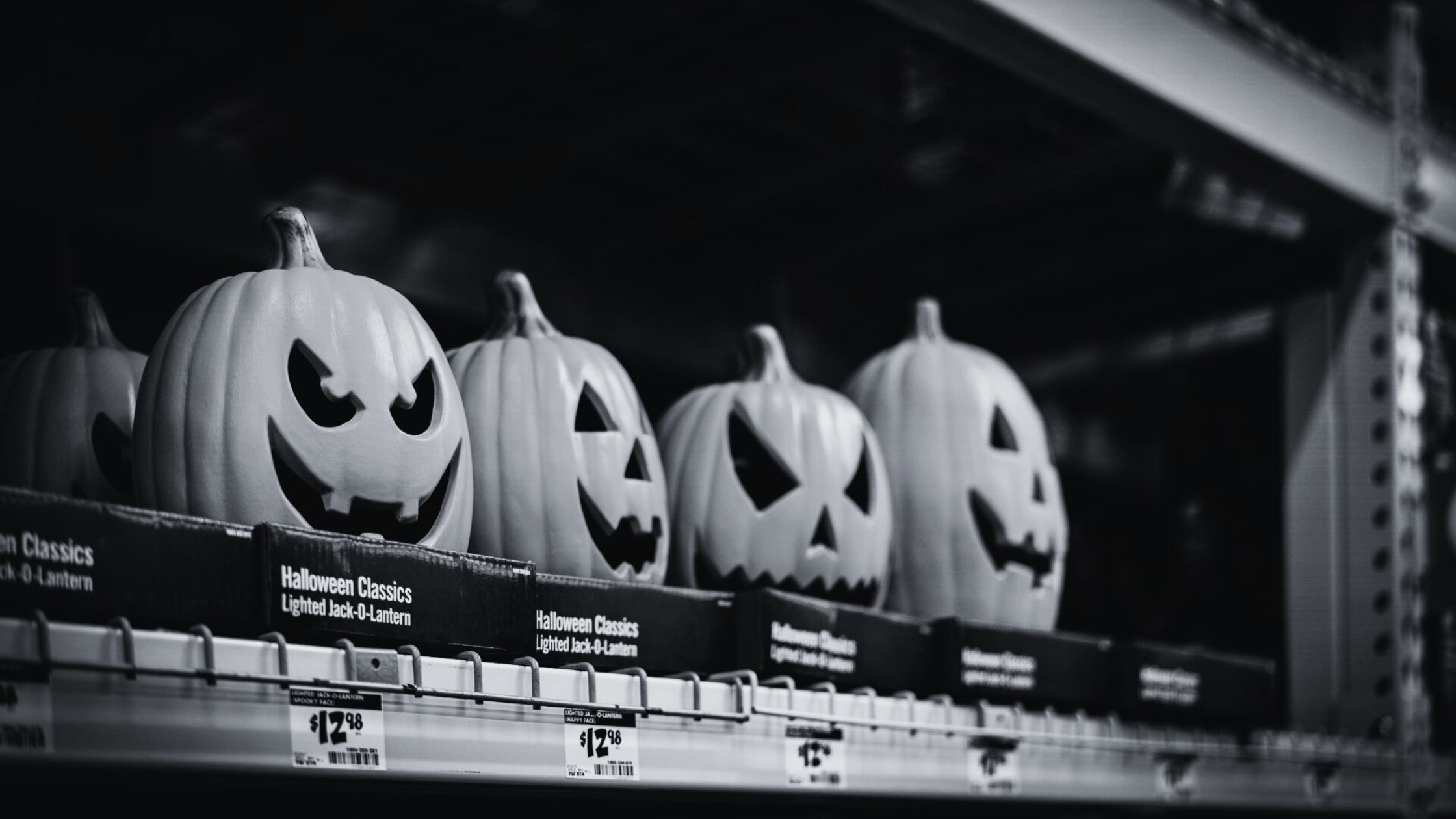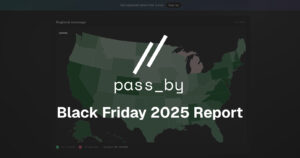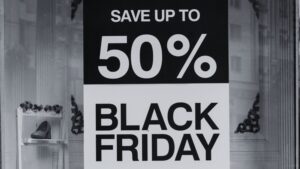Halloween emerges throughout October not just as a celebration of all things spooky, but as a significant retail event shaping shopping behaviors. Each fall, consumers eagerly await the arrival of the season’s festivities, increasing foot traffic and spend patterns in the retail market. But how is that reflected in Halloween retail visits and has it changed year on year?
The overall trend for all years shows a flat or slightly dipping trend throughout September before a pronounced, steady rise starting in early to mid-Octoberand peaking in the final days of the month.
At pass_by, we offer the highest in market accuracy with 94% correlation to ground truth, over 15 data inputs, and a full 90 days of predictive feeds. Book a call.
Key takeaways
- The highest visit share for retailers is in the third week of October, which is the peak for the Halloween shopping period.
- U.S region are very close in visit share, indicating a generally uniform level of retail activity throughout the country during the pre-holiday season.
- Confectionery retailer’s highest visit share was 1.81% on the 19th, and drops to 1.6% shortly after, but it does remain consistent without a sharp drop
When do consumers shop for Halloween?
Our data shows peak shopping days across all years tend to cluster around the beginning of September, likely driven by non-Halloween events like the Labor Day weekend and Back-to-School shopping.
For a true Halloween analysis, we must look past the early September spikes. The overall trend for all years shows a flat or slightly dipping trend throughout September before a pronounced, steady rise starting in early to mid-October and peaking in the final days of the month.
- The years 2020 and 2021 show their peak traffic on October 30th, suggesting that during the height of pandemic-related uncertainty, shopping was highly concentrated in the very last days leading to Halloween.
- 2023 & 2024 (Higher Baseline): These years maintained a noticeably higher baseline traffic throughout September and October compared to the earlier years. This suggests consumers in recent years are more consistently shopping and spreading out their holiday and general retail visits rather than delaying them to the last minute. The upward slope in late October is less steep because the starting traffic point was already higher.
While the Halloween peak is still strong, recent years have seen consumers return to a pattern of more frequent, earlier shopping for all retail needs, eliminating the suppressed traffic experienced in the pandemic years.
Halloween retail category performance 2024
We’ve combed through the data and found an overrall trends of clear acceleration in shopping activity across most non-Supermarket categories starting in the second week of October, with traffic indices generally peaking in the middle-to-late part of the month before a final surge right before Halloween.
Gift, novelty and sounvenir stores are unique for peaking in visits on October 30th, the day before Halloween, as consumers stock up on candy and novelty decor for the holiday.
Gift, Novelty, and Souvenir
This category shows the most dramatic and focused traffic surge directly leading up to Halloween.
- Peak Shopping Day: October 30 (The day before Halloween)
- Analysis: This category exhibits a consistently lower rate of increase than other categories through September and the first half of October. However, starting around October 20, traffic begins a steep, nearly uninterrupted climb.
- The daily foot traffic share on October 30 (the peak) is 2.35%, higher than any other category we analyzed on this day of the year, suggesting that this category captures consumers making very last-minute purchases for parties, decorations, and gifts right before the holiday.
Confectionery
Visits for candy and treats sees its highest concentration in the days leading up to the final week.
- Peak Shopping Day: October 19
- Analysis: Foot traffic in Confectionery begins its holiday increase early in October. Interestingly, the peak occurs nearly two weeks before Halloween. This suggests that the major “stock-up” on candy, possibly for parties or to secure specific holiday items, happens around the third weekend of October.
- Traffic remains high but slightly drops after the 19th and on Halloween day (October 31) itself. Confectionery’s highest visit share was 1.81% on the 19th, and drops to 1.6% shortly after, but it does remain consistent without a sharp drop.
General Merchandise
This category (which includes big-box retailers that sell a mix of holiday items, home goods, and groceries) sees a steady, early lift.
- Peak Shopping Day: October 19
- Analysis: Like Confectionery, this category’s peak is in the middle of October. The traffic index shows a steady increase through the latter half of September and early October, indicating that consumers begin shopping for general Halloween-related goods (decor, household items, early costumes) in the first half of the month.
Hobby, Toy, and Games
This segment, often associated with costumes and DIY projects, shows an early-to-mid-month concentration of traffic.
- Peak Shopping Day: October 17
- Analysis: The rise in foot traffic starts gradually in September and then accelerates in October. The peak day is in the middle of the third week of October, suggesting a focus on costume and party preparation. Following the peak, traffic dips and then slightly recovers, but the main purchasing window appears to be two weeks prior to the holiday.
Supermarkets
Supermarket traffic remains the most stable, as it is driven by non-seasonal daily needs, but still shows a subtle seasonal lift.
- Peak Shopping Day: October 17
- Analysis: Supermarkets show the lowest volatility in foot traffic, reflecting consistent daily demand. While there is a measurable peak in the third week of October, the trend is relatively flat compared to specialty retailers. This suggests any holiday-driven traffic is minor compared to regular shopping, or that holiday purchases are spread out over a longer period.
Warehouse Clubs
This category, known for bulk purchases, demonstrates a steady rise without an extreme last-minute rush.
- Peak Shopping Day: October 20
- Analysis: Foot traffic begins its ascent in September and continues to rise steadily, hitting its peak near the start of the final week of the month. This pattern is consistent with bulk-buying behavior—consumers visit earlier to stock up on large quantities of items like candy, large decorations, or bulk foods for parties.
Visits to malls and non-malls during Halloween
Both Mall and Non-Mall locations hit their highest traffic share on October 19th. This timing suggests that the major rush for planned Halloween purchases—such as costumes, large decorations, and early party supplies—occurs on the third weekend of October, roughly 12 days before the holiday.
Mall Locations
Mall foot traffic builds steadily in October, peaking on the third weekend of the month (Oct 19th). This suggests that Malls serve as a destination for planned, intentional shopping trips, likely for high-value items, or where comparison shopping is needed (e.g., dedicated costume stores within the mall).
Non-Mall Locations
Non-Mall foot traffic follows the same timing, peaking on October 19th. The slightly steeper relative rise indicates that the convenience and diversity of big-box or strip-mall retail surrounding the holiday is essential for consumers stocking up on bulk items, decorations, and general merchandise required for the holiday.
In summary, the key takeaway is that consumers execute their major, planned Halloween shopping roughly two weeks before the holiday (October 19th), and this pattern is consistent across both Mall and Non-Mall retail environments.
Which part of the U.S loves Halloween the most?
Our regional data shows that the average visit share is 1.6% across the U.S from September to October, with the mean visit share being the highest in the Northeast region, and lowest in the South.
However, regions are very close in visit share, indicating a generally uniform level of retail activity throughout the country during the pre-holiday season. But there are a few key differences.
- Highest Visit Share: The Northeast region recorded the highest average daily foot traffic share over the September-October period of 1.6447%
- Lowest Visit Share: The South region recorded the lowest average daily foot traffic share of 1.6419%.
Regional Halloween Shopping Timing
All regions show a significant initial spike on September 1st (likely for Labor Day/Back-to-School) and then follow a characteristic upward trend in October leading to Halloween. Focusing on the peak shopping activity after the early September spike reveals distinct regional timing:
| Region | Peak Shopping Day (Post-Sep 1) | Days Before Halloween (Oct 31) |
| South | October 20 | 11 days |
| West | October 20 | 11 days |
| Midwest | October 19 | 12 days |
| Northeast | October 17 | 14 days |
- Earliest Peak: The Northeast region leads, with foot traffic peaking on October 17th. This suggests Northeast consumers start their major, planned Halloween shopping (e.g., dedicated trips for costumes and large decor) earlier than other regions.
- Latest Peak: The South and West regions peak later, on October 20th. This indicates these regions wait until the final two weekends before the holiday for their highest concentration of shopping activity.
- General Pattern: All regions concentrate their highest foot traffic in the third weekend of October (Oct 17-20), confirming this as the critical nationwide window for organized Halloween shopping.
Halloween retailers visit share
Looking at retailers that sell Halloween products such as costumes, decor, etc, we see a recovery from the COVID pandemic, and small shifts year-on-year in when consumers are choosing to shop.
- Last-Minute Focus: For 2020 through 2023, the absolute peak of foot traffic occurred on Halloween Day (October 31st). This highlights that many costume and specialty purchases are highly last-minute.
- 2024 Shift: The only deviation is 2024, where the peak traffic occurred on October 30th. This marginal shift might suggest consumers are getting their final purchases in the day before, rather than waiting until the morning of Halloween.
Year on year Halloween retailer visit trends
- COVID Impact & Recovery (2020-2022): Traffic was lowest in 2020 and 2021, likely due to pandemic disruptions. A strong recovery was seen in 2022 (1.478% visit share), suggesting the return to normal holiday planning.
- Peak Year (2023): 2023 saw the highest total visit share, marking the peak of the post-pandemic shopping rebound for these specialty brands (1.54% visit share)
- Recent Trend (2024): The 2024 visit share remained consitent from 2023, averaging in at 1.524%.
Strategic Implications & The Halloween Outlook
In crafting a successful strategy for the Halloween shopping season, retailers need to embrace the evolving landscape by staying ahead of consumer buying behavior trends. As Halloween shifts into a hyper-segmented, and data-driven season, integrating both physical and digital platforms is key.
Retailers should harness the growing interest and demand by creating family-oriented and premium offerings, providing diverse product ranges that cater to different segments of the market.
Emphasizing early engagement, businesses can capitalize on the lengthy Halloween season, capturing attention in late September through to October. Crafting interactive and immersive customer experiences, whether in-store or online, can enhance visibility and draw consumer interest. This includes personalized marketing tactics and leveraging digital innovations to create engaging shopping journeys.
Sign up to our newsletter so you never miss a report.
FAQs
What sells the most on Halloween?
The top-selling items on Halloween are candy, costumes, and seasonal decorations. Chocolate is the most popular type of Halloween candy, and popular decorations include items like lighting (e.g., spooky lights, LED strings) and themed accessories.
Why do stores sell Halloween stuff so early?
Retailers sell Halloween products early, before Halloween, as consumers buy products earlier than the Halloween season. While the peak shopping periods are a few weeks before Halloween, consumers buy costumes, decor, and other items, in advance.





